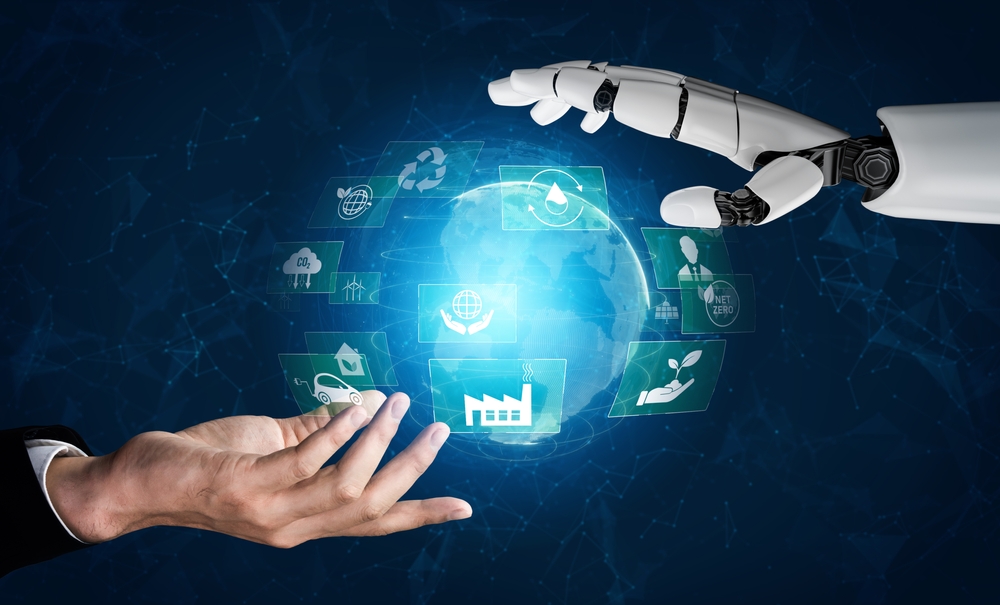
Discover how autonomous AI is transforming industries through self-learning systems, intelligent automation, and human-tech collaboration.
Autonomous AI is the distinct discipline of AI in which tools and systems are advanced and upgraded enough to perform even with little to no human intervention. Autonomous systems can literally execute tasks right from repetition, automation, to data set analysis.
Intelligent systems are now closer to AI frequently portrayed in fiction thanks to autonomous AI. An autonomous AI system provides corporations and other organizations with increased capabilities through the cooperation of multiple components.
Any kind of AI system or technology that frequently needs human interaction can be referred to as general artificial intelligence.
It also includes more sophisticated systems that can analyze large data sets with little assistance from humans, like deep learning platforms, machine learning, and reinforcement learning. One of the more sophisticated AI features is autonomous artificial intelligence.
Experts frequently refer to many modern AI tools and systems that aren’t entirely capable of functioning without human guidance as “narrow AI.” Artificial general intelligence (AGI), on the other hand, is a theoretical concept that holds that AI can surpass human capabilities in every aspect and be totally independent of human operators. Although autonomous AI is a significant step toward AGI, it is neither.
A variety of cutting-edge technologies, such as machine learning, natural language processing (NLP), and real-time data analysis, are used by autonomous agents. Here’s a closer look at their operation:
Autonomous AI systems examine the gathered data using machine learning techniques to spot trends and forecast results. They make choices that support their objectives using this information.
An autonomous customer care representative might, for instance, examine previous exchanges to decide how best to answer a customer’s question.
Initially, autonomous agents collect information from a variety of sources, including external databases, transaction histories, and consumer interactions. Making educated decisions and comprehending the context of each activity depend on this data collecting.
Following a choice, the agent takes the required steps to accomplish the intended result. This could entail processing orders, responding to consumer inquiries, or forwarding complicated problems to human representatives. A fluid and effective execution procedure guarantees a positive client experience.
The capacity of autonomous intelligence to learn from every interaction is one of their primary characteristics. To increase performance over time, they constantly update their knowledge base and hone their decision-making algorithms.
Over time, their performance increases as they use reinforcement learning to hone their decision-making skills. They can manage a growing variety of jobs and situations because of their flexibility.
Autonomous agents differ from one another. The self-learning artificial intelligence comes in a variety of forms and employs various strategies to accomplish their goals. These are some of the most popular kinds of autonomous agents that you can choose from.
These agents make wise decisions by assessing the environment and complementing user goals. Also known as reasoning or cognitive agents, they configure the ecosystem, balance multiple actions, and pick the best possible gateway to achieve your objectives.
These are the most basic types of autonomous bots in decision AI. They react quickly to new information, but they don’t remember it or learn from previous interactions. Instead, they make decisions based on their particular inputs and predetermined actions.
Hybrid agents constitute elements of both deliberative and reactive agent segments. These agile assistants can immediately detect and respond to changes in the environment without deterring focus from the long-term objective.
These self-learning AI agents can be skillfully programmed or enabled by machine learning to learn while making judgments. They will make astute guesses based on their prior experiences to fill in the gaps in an incomplete data set.
The ability of autonomous AI to perform jobs and work that humans would have to perform without them is its main advantage. The following are a few more advantages:
Continuous training and system optimization are necessary for other types of narrow, or single-task, AI development. This may need laborious, intricate procedures to keep them operating correctly. By repeating procedures and learning iteratively, AI decisioning becomes better on its own. This lessens the training burden on developers.
Numerous monotonous chores take time away from more significant and intricate duties that call for creativity and human intelligence. To increase productivity, businesses can use autonomous AI to automate certain processes.
Additionally, autonomous AI systems operate without constant supervision, increasing productivity.
Marketing teams can benefit greatly from autonomous AI’s ability to evaluate consumer data and offer tailored recommendations.
As autonomous AI continues to evolve, its impact will extend far beyond automation — reshaping how decisions are made, systems adapt, and organizations innovate. The challenge now lies in ensuring that these self-governing systems operate with transparency, accountability, and alignment to human values.
The future of intelligence decision making isn’t just about machines acting independently — it’s about building a world where intelligence and intention move forward together.